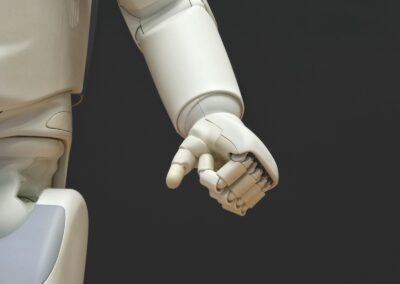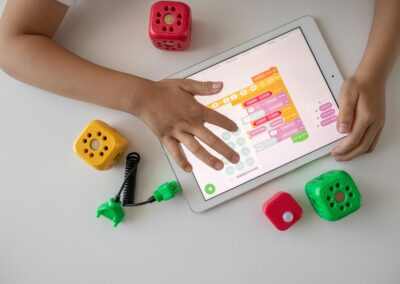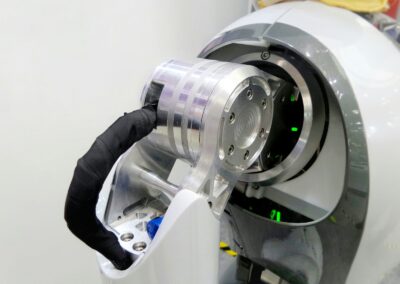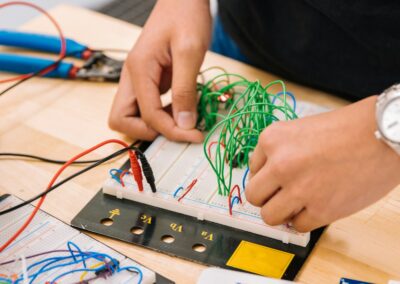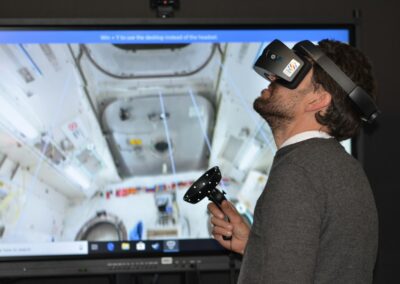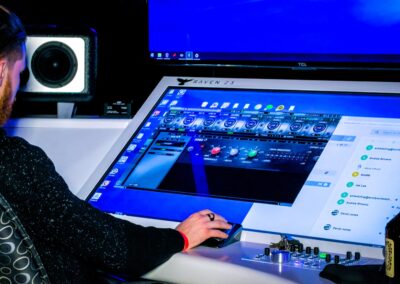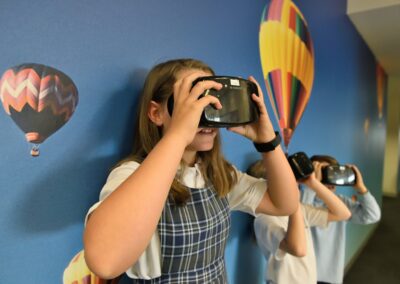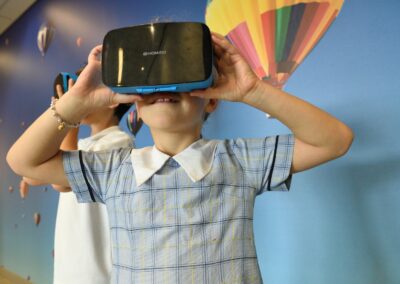Enhancing Student Engagement and Motivation through Immersive Technologies
Transforming Education with Virtual Reality
The benefits of VR and AR in metaverse learning extend far beyond traditional education methods. By integrating these immersive technologies, educational institutions can significantly improve student engagement and motivation. In a world where digital natives thrive on interactivity and experiential learning, virtual reality (VR) offers an unprecedented opportunity to transform the educational landscape.
VR technology creates fully immersive environments where students can explore complex concepts in a three-dimensional space. For instance, instead of merely reading about the human anatomy, medical students can virtually navigate through the human body, understanding the intricate details of organs and systems in a way that textbooks cannot match. This hands-on approach ensures that learners retain more information and develop a deeper understanding of the subject matter.
Moreover, VR allows for the creation of interactive scenarios that simulate real-world challenges. For example, engineering students can design and test structures in a virtual environment, enabling them to learn from mistakes without real-world consequences. This not only boosts their confidence but also prepares them for actual fieldwork. In regions like Saudi Arabia and the UAE, where there is a strong focus on innovation and technology in education, VR can play a pivotal role in achieving educational goals.
Augmented Reality: Bridging the Gap between Digital and Physical Worlds
Augmented reality (AR) enhances learning by overlaying digital information onto the physical world, making abstract concepts more tangible and accessible. AR applications in education range from interactive textbooks to complex laboratory simulations, providing a bridge between theoretical knowledge and practical application.
For instance, AR can bring historical events to life by overlaying historical figures and scenes onto physical locations. This not only makes history lessons more engaging but also helps students better understand the context and significance of historical events. Similarly, in the sciences, AR can transform a simple classroom into a dynamic laboratory where students can experiment with virtual chemicals and observe reactions without the risks associated with real chemicals.
The UAE and Saudi Arabia, with their strategic investments in cutting-edge educational technologies, are well-positioned to leverage AR to enhance learning experiences. By integrating AR into their curricula, educational institutions in these regions can provide students with a more engaging and effective learning experience, fostering a generation of learners who are well-prepared for the future.
Boosting Motivation through Gamification and Interactive Learning
One of the key benefits of VR and AR in metaverse learning is their ability to incorporate gamification and interactive elements into education. Gamification uses game-like elements such as points, badges, and leaderboards to motivate students and make learning more enjoyable. When combined with VR and AR, gamification can transform traditional educational activities into immersive and engaging experiences.
For example, students can participate in virtual scavenger hunts that require them to solve problems and find clues in a virtual world. These activities not only make learning fun but also encourage critical thinking and problem-solving skills. Furthermore, the competitive element of gamification can motivate students to strive for excellence and improve their performance.
In the context of Saudi Arabia and the UAE, where there is a growing emphasis on STEM education and digital literacy, incorporating VR and AR into the curriculum can significantly enhance student motivation and engagement. By making learning more interactive and enjoyable, educational institutions can ensure that students remain interested and invested in their education, leading to better academic outcomes.
Practical Applications and Long-Term Benefits of VR and AR in Education
Personalized Learning Experiences
VR and AR technologies offer the potential for personalized learning experiences, catering to the unique needs and preferences of each student. In a traditional classroom setting, it can be challenging for educators to address the diverse learning styles and paces of all students. However, VR and AR can provide customized learning paths that adapt to individual students’ progress and understanding.
For instance, a student struggling with a particular concept can receive additional virtual tutorials and practice sessions tailored to their needs. Conversely, advanced students can explore more challenging material at their own pace, ensuring that they remain engaged and motivated. This personalized approach not only enhances learning outcomes but also helps students develop a love for learning.
In Dubai and Riyadh, where educational excellence is a priority, the adoption of VR and AR technologies can help achieve the goal of providing high-quality, individualized education. By leveraging these technologies, educators can create learning environments that are responsive to the needs of each student, fostering a more inclusive and effective educational system.
Collaboration and Communication in Virtual Classrooms
Another significant benefit of VR and AR in metaverse learning is the enhancement of collaboration and communication among students. Virtual classrooms can bring together students from different locations, allowing them to collaborate on projects and engage in discussions as if they were physically present together. This is particularly beneficial in the context of global education, where students can benefit from diverse perspectives and ideas.
For example, students in Saudi Arabia can collaborate with peers in the UAE on joint projects, sharing their insights and learning from each other. VR environments can simulate real-world workspaces where students can work together on complex tasks, enhancing their teamwork and communication skills. These collaborative experiences are invaluable in preparing students for the interconnected and globalized world of work.
The use of VR and AR in education aligns with the broader vision of the UAE and Saudi Arabia to become global leaders in innovation and technology. By fostering collaboration and communication through immersive technologies, these regions can cultivate a generation of forward-thinking leaders who are equipped to tackle global challenges.
Preparing Students for Future Careers
The integration of VR and AR into education is not just about enhancing current learning experiences; it is also about preparing students for future careers. As industries increasingly adopt these technologies, students with hands-on experience in VR and AR will have a competitive advantage in the job market. Professions in healthcare, engineering, architecture, and even retail are beginning to leverage these technologies for training and operational purposes.
For instance, medical students trained in VR simulations of surgical procedures will enter the workforce with a higher level of practical experience and confidence. Similarly, engineering students who have designed and tested structures in virtual environments will be better prepared for real-world challenges. This practical experience is invaluable and can significantly enhance employability and career readiness.
In regions like Saudi Arabia and the UAE, where there is a strong emphasis on technological advancement and economic diversification, integrating VR and AR into education is a strategic move. By equipping students with the skills and experience needed to excel in future careers, these regions can ensure their continued growth and success in the global economy.
Conclusion
In conclusion, the benefits of using VR and AR in metaverse learning are extensive and transformative. These technologies enhance student engagement and motivation, provide personalized learning experiences, and foster collaboration and communication. Moreover, they prepare students for future careers by providing practical, hands-on experience in a virtual setting.
As regions like Saudi Arabia and the UAE continue to invest in educational innovation, the adoption of VR and AR technologies can play a pivotal role in achieving their educational goals. By embracing these immersive technologies, educational institutions can provide students with a richer, more engaging learning experience, ultimately leading to better academic outcomes and a more prepared and skilled workforce.
#VRinEducation #ARinEducation #MetaverseLearning #StudentEngagement #StudentMotivation #SaudiArabia #UAE #Riyadh #Dubai #AI #Blockchain #ExecutiveCoaching #GenerativeAI #ModernTechnology #BusinessSuccess #LeadershipSkills #ManagementSkills #ProjectManagement




